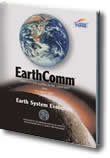Below are storylines that were designed by Cheryl Mosier, an Earth Science Teacher at Columbine High School in Littleton, Colorado.
Unit is supplemented with: - Space History Project – each student researches and presents information about a specific space mission
Big Idea:
- Change through time produced Earth, the net result of constancy, gradual changes, and episodic changes over human, geological, and astronomical scales of times and space.
- Extraterrestrial influences upon Earth include extraterrestrial energy, material, and influences due to Earth’s position and motion as a subsystem of an evolving solar system, galaxy, and universe.
|
|
Activity 1 – The History and Scale of the Solar System |
Activity 2 – The Earth-Moon System |
Activity 3 – Orbits and Effects |
Activity 4 – Impact Events and the Earth System |
Activity 5 – The Sun and Its Effects on Your Community |
Activity 6 – The Electromagnetic Spectrum and Your Community |
Activity 7 – Our Community’s Place Among the Stars |
|
Key Evidence Learned
Connection to: |
- scale model of solar system - calculate distances using AU, parsecs and light years - nebular theory of formation - formation of universe |
- lunar phases - tidal forces - types of tides - Moon’s origin - appearance of the Moon compared to other solar system bodies |
- construct and measure ellipses - eccentricity - Earth’s orbit - how a changing orbit could affect climate - orbits of comets and asteroids |
- mechanics of an impact event - energy released in a collision - impact events - chances of an impact event |
- structure of the Sun - reflection, absorption and scattering - solar wind - space weather - sunspots, solar flares and other phenomenon |
- explain the EM spectrum - different instruments used to detect EM - spectral fingerprints - how EM info is used to determine other objects - benefits and hazards |
- understand our place in the galaxy - stellar structure and stellar evolution - relationship between brightness and magnitude - other stars affect on Earth |
|
Big Idea |
- how the universe and solar system formed and has changed over time |
- changes of Earth - tides - lunar phases |
- orbits of Earth, planets and other objects |
- impact events – causes and hazards |
- how extraterrestrial energy impacts Earth |
- extraterrestrial energy - other objects in the universe |
- our place in the galaxy and universe |
|
Real Life and Chapter Challenge |
- formation of the universe and solar system |
- lunar phases - tides |
- possibility of collisions - orbits |
- chance of an impact event - how impact events have changed life |
- impact of the Sun on our lives, not just by light |
- how EM spectrum impacts our lives - objects in the universe |
- how our star compares to others in the galaxy and universe |
|
Geosphere |
- formation of planets |
- formation of the Moon |
- collision events |
- impact craters - impact hazards |
|
|
|
|
Hydrosphere |
- formation of oceans |
- why there is no water on the Moon |
- collision events |
- impact hazards |
|
|
|
|
Atmosphere |
- formation of air |
- why there is no air on the Moon |
|
- impact hazards |
- auroras |
|
|
|
Cryosphere |
|
|
|
|
|
|
|
|
Biosphere |
|
- astronaut discoveries |
- orbit changes |
- impact hazards |
- hazards of solar radiation |
- hazards and benefits of EM radiation |
- greater understanding of our universe |
|
State Stand. |
|
4.4.a, 4.4.b |
4.4.b |
|
|
4.4.c, 4.4.e |
4.4.d, 4.4.e |
|
Jeffco Stand. |
|
4.4.a, 4.4.b |
4.4.b |
|
|
4.4.c., 4.4.e |
4.4.d, 4.4.e |
|
CSAP Frame. |
4.4.2.b, 4.4.2.c |
4.4.1.b, 4.4.1.c, 4.4.2a |
4.4.2.a, 4.4.2.b, 4.4.2.c |
4.4.5.c |
4.4.4.d |
4.4.3.a, 4.4.3.b, 4.4.3.c |
4.4.4.a, 4.4.4.b, 4.4.4.c, |
|
Jeffco PE |
|
U 2b, 2c |
U 2b, 2c |
|
U 1d, 2a |
U 1a, 1b, 3c |
U 1c, 1e |

